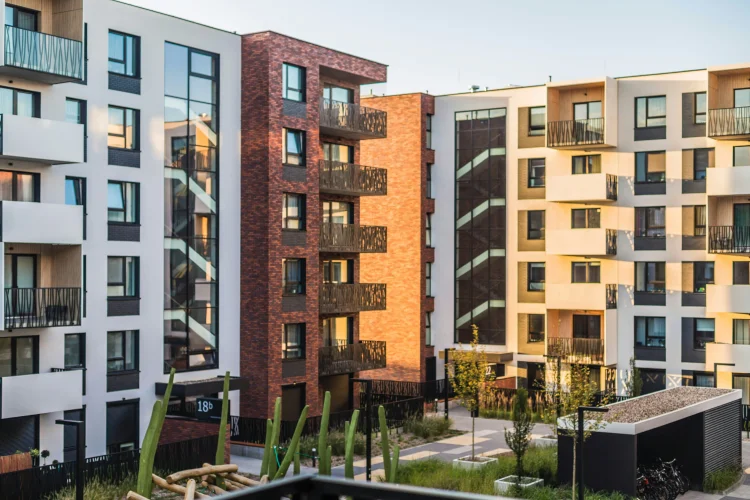You can apply wall graphics to a wide variety of surfaces, such as glass, metal, brick, cement block, and most commonly, drywall to activate any space. Whether your goal is to energize a fitness center, motivate employees or create a memorable customer experience, wall graphics, if executed properly, can really transform a space.
However, if you don’t plan and prepare properly, your wall graphics can bubble, peel or even slide off the wall – all of which is very costly to remove and repair, but avoidable if you take the proper measures. Follow these four tips to avoid common pitfalls when installing adhesive vinyl wall graphics:
Tip 1 – Smooth Walls to Perfection
People often have the misconception that wall graphics will cover wall imperfections, such as joint compound that hasn’t been sanded to perfection or paint drips. The material that is most typical for wall graphics is adhesive vinyl, which is only 2 millimeters in thickness.
When wall graphics are applied to surfaces that were sloppily finished, each imperfection will show. Also, the darker the graphic, the more visible the imperfection will be.
The key is to make sure that whoever is responsible for finishing the walls to which graphics will be applied takes extra care when finishing. That person should run their hands over the entire surface to make sure it is completely smooth, so the paint, when cured, will be as smooth as glass.
Tip 2 – Take Pains with Your Painting Process
The paint selection and process is by far the most important and overlooked step to a successful wall graphic installation. Think of the wall graphics as giant stickers. The stickers need as smooth of a surface as possible for maximum sticker-to-surface contact.
Always use white water-based semi-gloss paint when possible. The reason that the paint selection is white is because dark colors can sometimes transmit through lighter graphics, and we recommend semi-gloss because we want as smooth of a surface as possible for the sticker to stick to.
Never use flat paint. On a microscopic level, it creates a rigid surface that will eventually cause wall graphics to peel at the edges. However, there are instances where it is not possible to paint the wall with white water-based semi-gloss paint when using cut out wall vinyl, in which case you could paint the walls with an eggshell finish at the minimum.
After painting, and without exception, always allow at least 10 days for the paint to fully cure. Paint chemically changes and emits gas up until it has fully dried. Thus, covering a wall with an unbreathable layer of vinyl wall graphics prior to this happening will cause bubbles on the graphic from the paint off-gassing.
Tip 3 – Installation Conditions Matter
Often wall graphics are part of a larger construction project. If you’ve ever been on a construction site in the winter, then you know that they are not always conditioned until the project has been completed.
This occasionally poses a problem for interior and exterior wall graphic installations, as the temperature needs to be consistently 55 degrees Fahrenheit or higher so the adhesive will work effectively.
Conversely, when installing wall graphics in warm climates or the summer time, always note the position of A/C ducts. If you are installing a graphic in the summer time and A/C units are running at full capacity, make sure the vents are not located in a position where they are blowing on the wall graphic. If they are, then consider turning the A/C off or to a warmer temperature until a few days after the wall graphics have been successfully installed, allowing the adhesive enough time to bond with the painted surface at a warmer temperature.
Tip 4 – Always Hire Professionals.
If you’ve ever been involved with wall graphic installations, then you know that good installers are hard to come by, and they can make the difference between amazing wall graphics that transform a space to graphics that look sloppy and detracts from the space.
If you are shopping around for a good installation company, make sure you ask for references and samples of installations that the vendors have completed before hiring anyone. Or consult with your design firm.
Since we do this type of work all of the time, we have established a network of installation companies throughout the U.S. upon which we count on to get the job done right.
Don’t rely on someone onsite to conduct a survey or provide measurements. Sure, these initial measurements can get the designers started on concepts and proofing by providing measurements and photographs of the space if you are working remotely. But before printing and installing the graphics, always employ the installers that are doing the work to visit the site to conduct a site survey.
Site surveys usually cost a few hundred dollars and can range beyond that, depending on the complexity of the space being measured. Consider the additional expense an insurance policy for the success of the final product.
If you follow these four tips, you will greatly increase the probability of successful wall graphic installations. Of course, there are always extenuating circumstances that come up, so always be sure to consult a professional .




